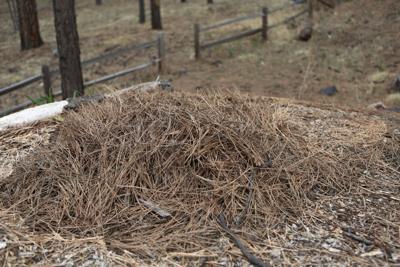
Recipe for Pine Needle Composting
This is an addendum to the
newspaper article on pine needle composting that was printed on February 2,
2019 in the Gardening Etc. column of the Arizona Daily Sun.
Pine needles can be composted but
need to be ground up first to break down the cuticle that protects each needle.
I discussed this in the article. My basic recipe is as follows:
- Five 5 gallon buckets of ground pine needles
- One 5 gallon bucket of spent brewery grains (or manure**)
- One 5 gallon bucket of used coffee grounds
- One 5 gallon bucket of vegetable scraps
**I personally do not use manure in my compost but it can be very
helpful in heating up compost piles.
First, I soak the ground pine
needles in water for 24 hours. I drain the water off and save it to moisten the
pile later on. I pre-mix the ingredients in a wheelbarrow. Build the compost
pile as you normally would, in a bin or pile. Pour some of the left over pine
needle water over the pile. Make sure it is well ventilated and turn it every
1-2 weeks.
After two weeks I add the same
basic recipe again to keep the pile at the optimal size. After this second
addition I change up the recipe a bit. I stop adding pine needles as they are
slower to break down than the other ingredients. I start adding greens only. I
use coffee grounds and vegetable scraps while avoiding grains and manure which
are too high in nitrogen and could cause the pile to go anerobic. There should
still be enough carbon in the needles to keep the pile healthy. I try to keep
the compost hot and breaking down for about two months.
After two months (or breakdown of
the pile) I spread it out and let it cool. This prevents it from heating up in
the garden. Also, if worms have access during this period they will break it
down even further.
It will be better quality compost
if you strain it to remove sticks and other debris.
No comments:
Post a Comment